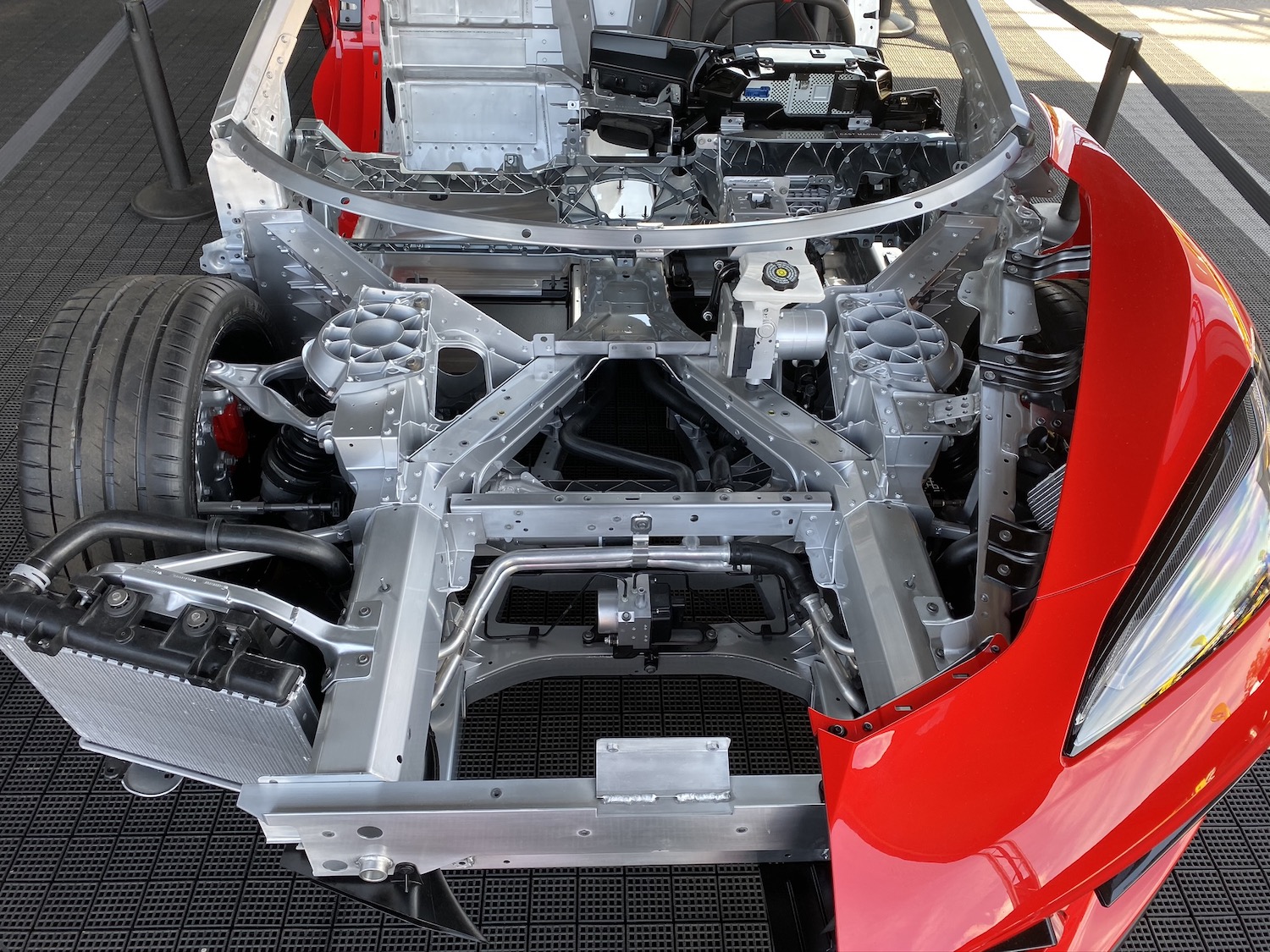The C8 Corvette’s suspension adjustability is a dream for track hopefuls
Early reviews of the 2020 Corvette are finally out. It comes as no surprise that the LT2 V-8 is sensational, but not everyone is showering praise on the mid-engine Vette’s handling dynamics. The underlying theme: understeer. I got a detailed, up-close look at the C8 Stingray’s suspension, so let’s dig into the ways we might be able to adjust the handling behavior to our liking.
For starters, it is quite possible that Chevy engineers designed the C8 to exhibit understeer as a way to prevent newcomers to the rear mid-engine layout from spinning their cars. (Keep in mind, this is not terribly unusual for an “as delivered” alignment for many vehicles.) That said, while the standard alignment might be a little pushy for some, the new Corvette’s adjustability makes it possible to dial in the car’s behavior to suit your preferred driving style.
As I am not a race car driver, I will not delve into the changes drivers will need to make in order to deal with that understeer. However, I have spent a lot of time on the other side of the pit wall, so I can share my perspective as a mechanic. With that in mind, I can lay out all the race-car-style adjustability on tap in the new generation of the Corvette and how it might be possible to dial out that understeer without any aftermarket components.
Suspension adjustability on the C7 Corvette
20191017160510)
Unlike the powertrain layout, the suspension arrangement is not a terribly significant departure from previous Corvette generations—there are some notable changes, though. When it comes to their suspension Corvettes have traditionally been highly adjustable right from the factory. Recent generations have allowed simple adjustments to toe and camber, as well as height (to an extent).
On the last-generation C7 Corvette, as with most cars, toe can be adjusted by threading the tie rod ends in the desired direction. Rear toe is adjusted by moving an eccentric bolt that is located at the end of each toe link. While this allowed for a limited range of adjustment, many chose to go to an aftermarket sleeved link that allows for a finer and wider adjustment range.
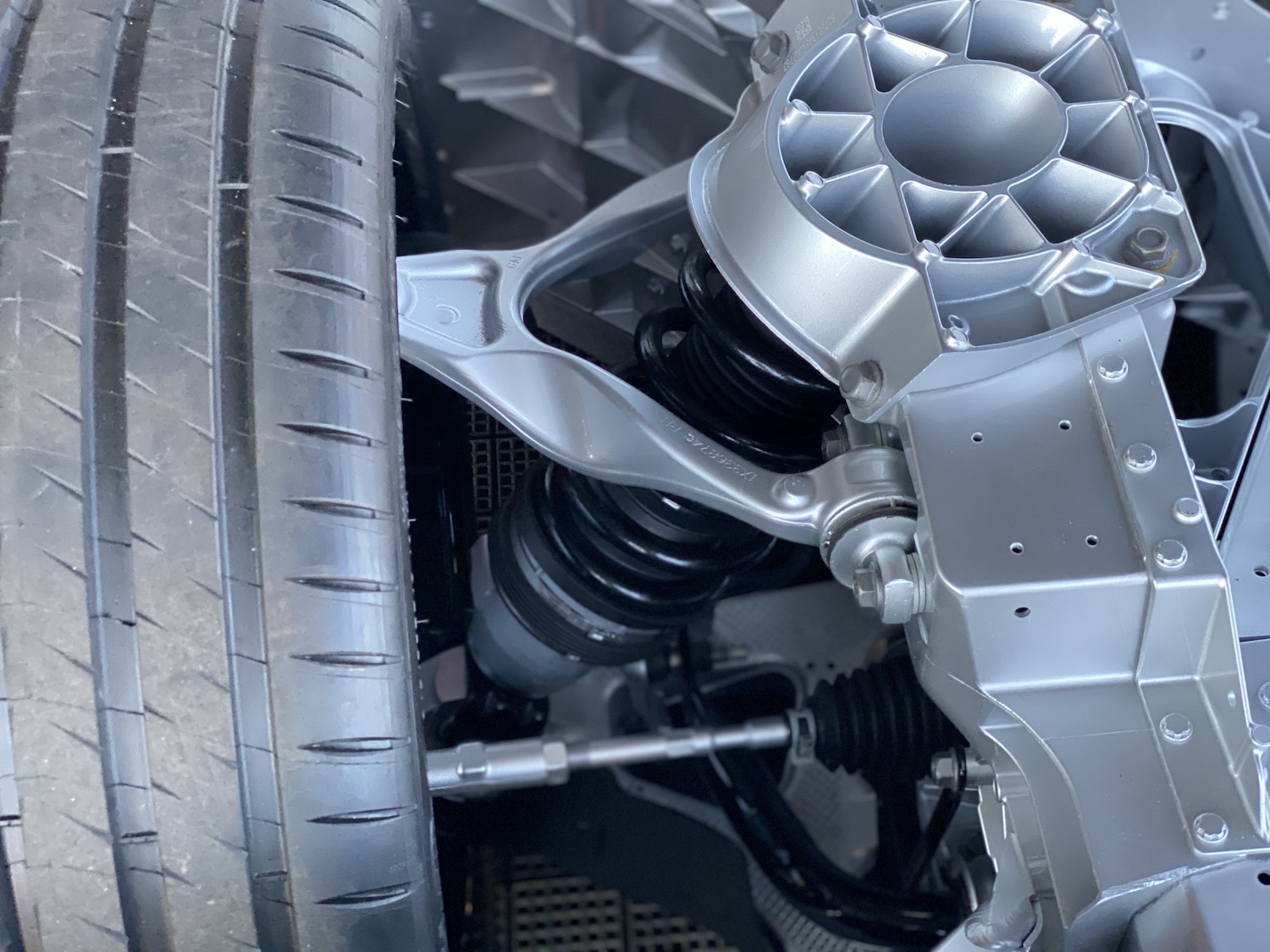
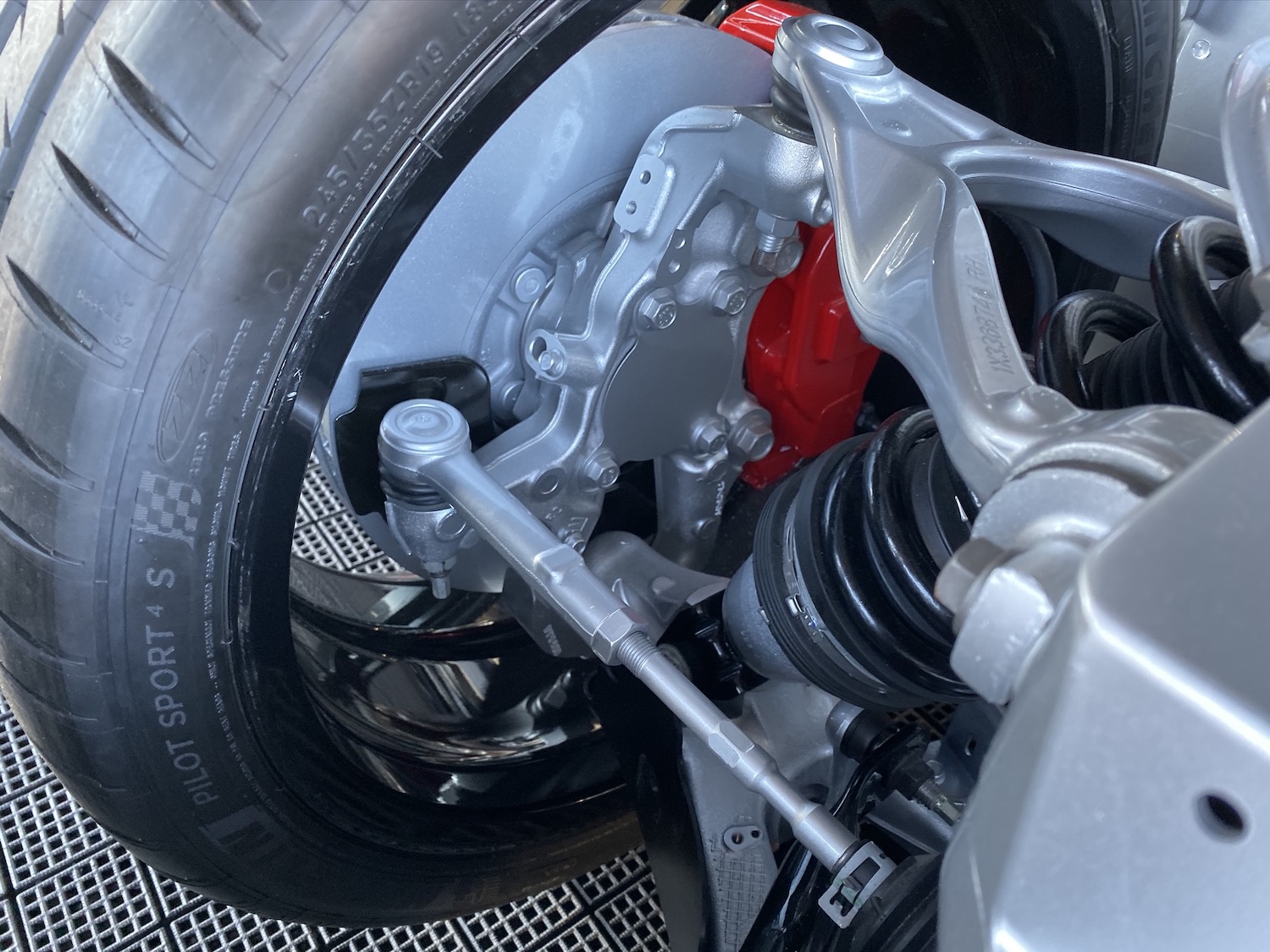
Like its predecessors, the C7 Corvette is equipped with transverse leaf springs. These were finely tuned by GM engineers to work with the stock suspension setup, and replacing them with a different rate is not really an option. The suspension does offer some height adjustment in the form of threaded pads that space the leaf spring away from the control arm, which allow owners to lower or raise their car by threading the pads in or our out of the spring. While these threaded pads are occasionally used to corner balance a car, they are also often used to slam the car to the ground as low as possible, and since those leafs are not easily replicable with a matching spring rate, it harms the dynamics of the car in some cases. After all, the spring rate cannot change to match the height change.
Camber on the C7 is easily adjustable, given that the upper control arms on the front and the rear feature dog bones going through their bushings that are attached to the chassis with shims. That means a simple camber change can be performed by adding or removing these shims. The lower control arms are a little more complex to adjust; they feature eccentric bolts instead of those dog bones, which means that caster also changes as camber is adjusted. The ability to adjust caster is a good thing, but you have to keep in mind how it changes as you tinker with the camber.
Evolving the formula with the C8
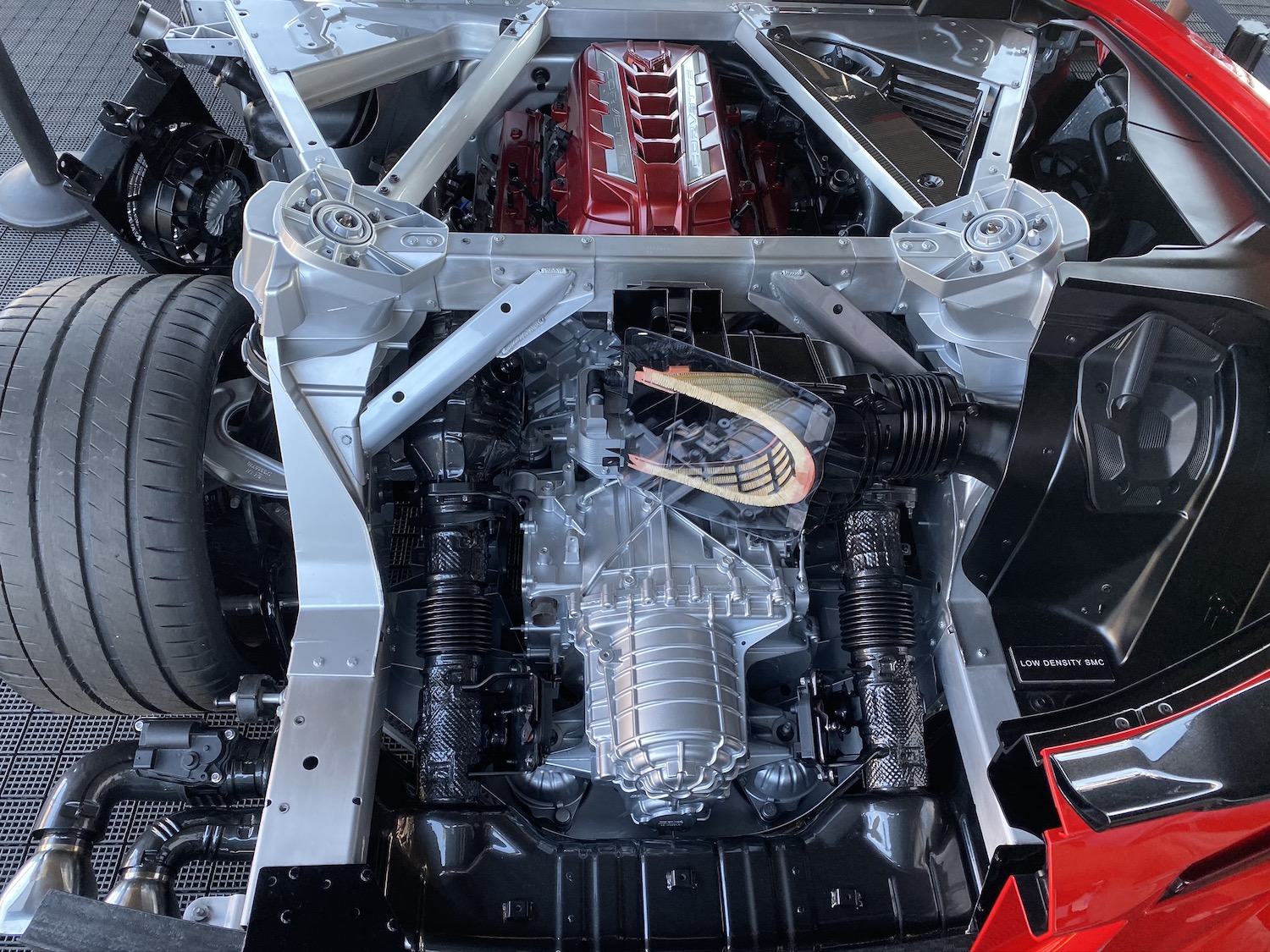
The 2020 Corvette picks up a lot of suspension tricks from the C7, including the shims on the upper control arms and the eccentric bolts on the lowers. Where does it start to differ? In areas like the rear toe adjustment. Chevy must have listened to its owners and replaced the solid toe link using eccentric bolts on the ends with two-piece thread toe links much like the aftermarket pieces that owners installed on the C7. This allows for a finer adjustment of rear toe, but it also makes it more reliable; there is not the same risk of slippage as with the prior eccentric bolts.
The biggest change on the C8 is, of course, the springs—gone are the transverse leafs. The mid-engine car is now equipped with a more traditional coil-over-spring setup. While this move will open up opportunities for installing different spring rates, the most critical change is that there are actual height adjusters installed on the rear dampers. GM’s implementation of these adjusters is fairly unique; most OEMs avoid it due to the risk of the threads becoming fouled up and damaged. Evidently the Corvette team wanted to have this feature and found a way to engineer a durable version.
According to Corvette engineer Christian Thomas, the team’s focus when designing the thread was robustness and ease of adjustability. They found a method to achieve both goals: instead of a metric thread form, GM decided to use trapezoidal thread form to enable adjustments under spring load, which allows for changes to be made in situations where the car is up on jack stands with the suspension at full rebound. The threads are hard-coat anodized with a mixture that is infused with Teflon, strengthening the thread for long-term durability and corrosion prevention. Engineers finished off the package by adding a plastic skirt that covers the threads to protect them from road debris that may bounce up at the dampers.
A cure for understeer?
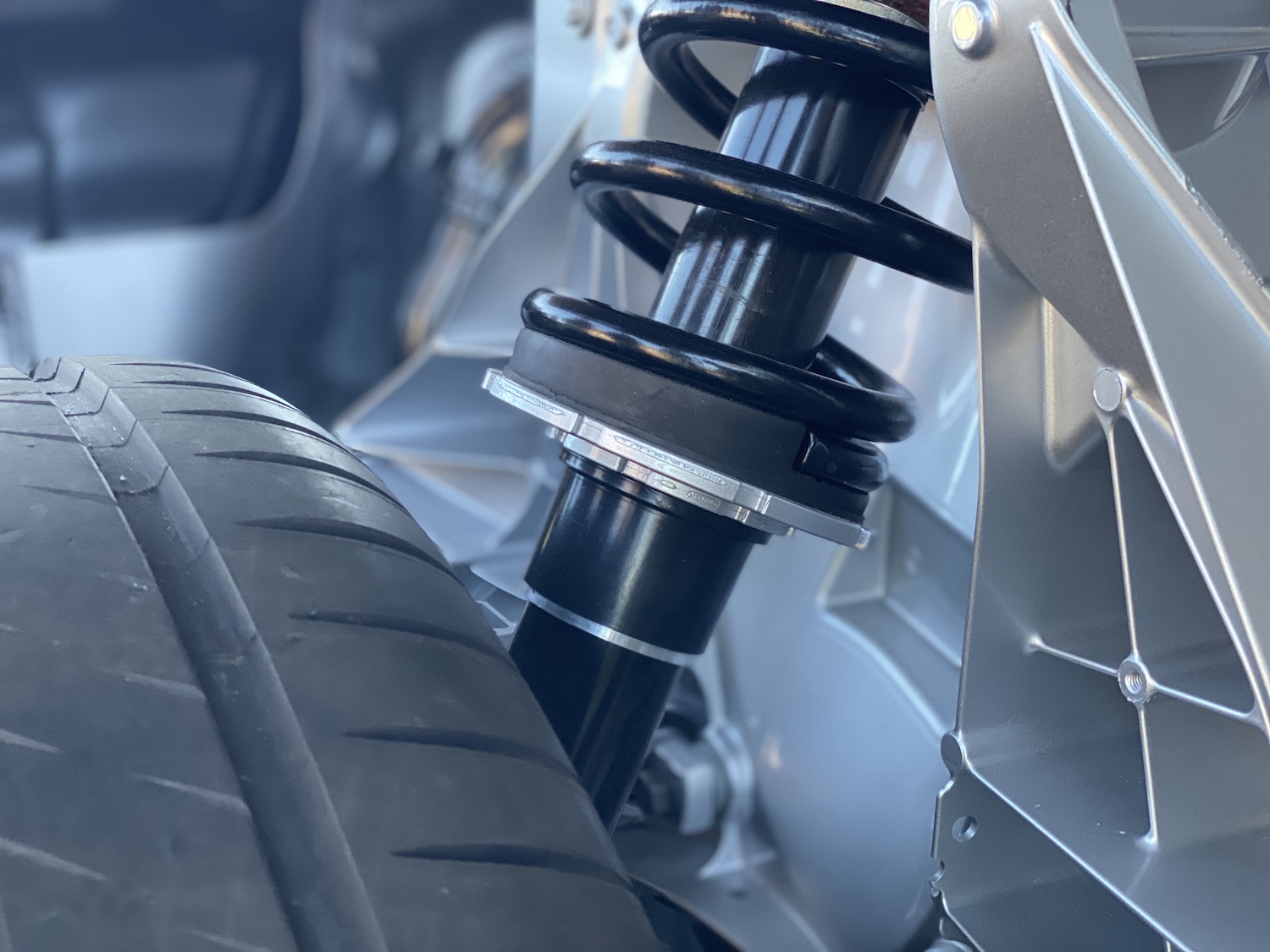
Back to the C8 Stingray’s handling—these height adjusters are key to mechanically preventing the understeer that many reviewers noted. With the new setup, it is possible to do a complete chassis adjustment and corner balance when combining them with the other suspension pieces. While a compete setup would require some detailed feedback from an expert driver, we can make some educated guesses on what might need to be changed to make the car understeer less, using just OEM adjustments.
Starting with tire pressures is always easy, because it doesn’t require any special tool. Lowering front pressures or rear pressures are easy ways to make the car looser and reduce unwanted understeer at a basic level. Moving on from there, we would need to know at which point in a corner the car is understeering. Since it sounds from most reviews like the car turns in pretty well, our point of focus is likely mid-corner.
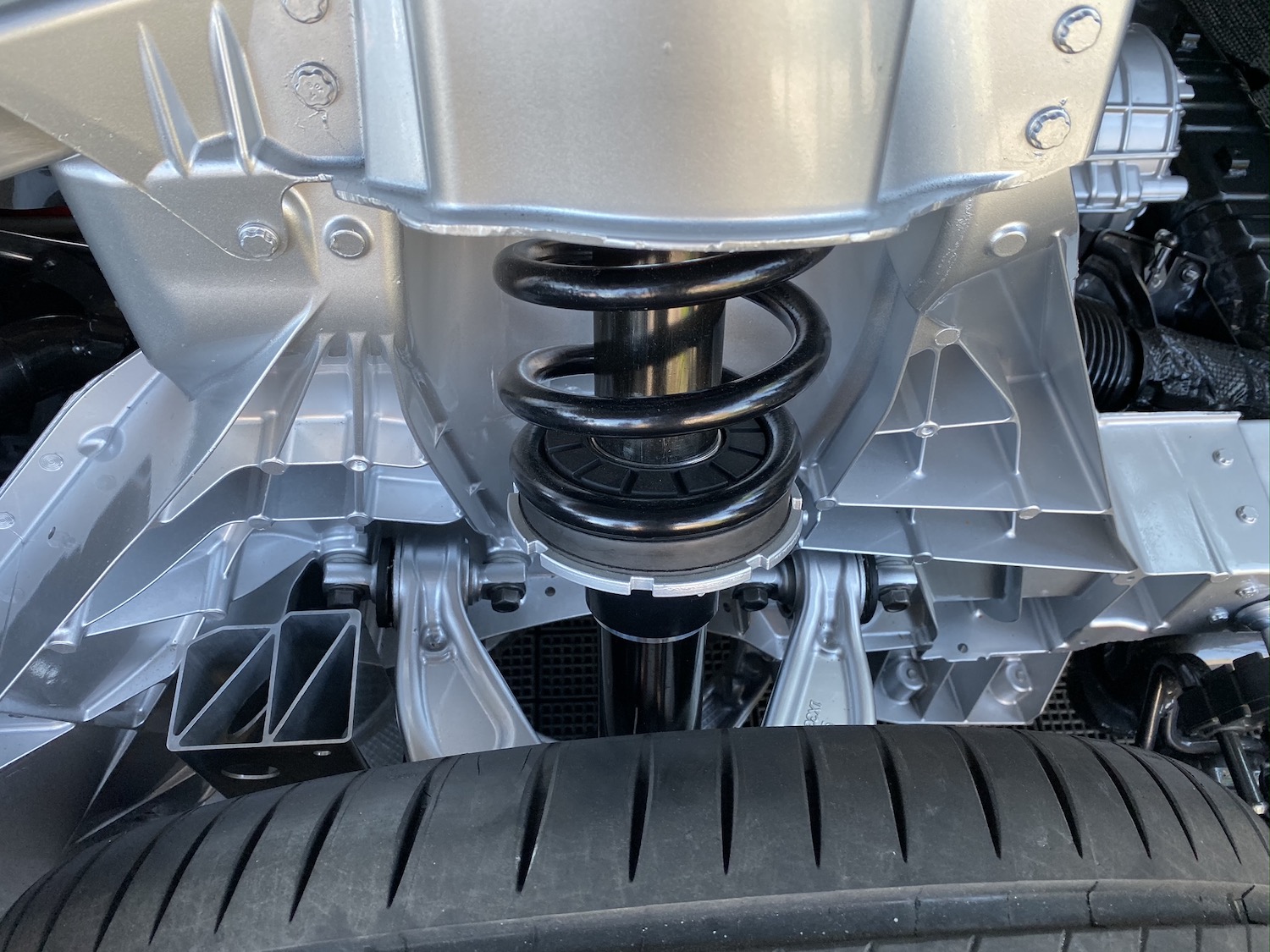
Since we are changing spring rates or rebound damping, our next step would be to use those rear height adjusters and raise the rear of the car to loosen it up. This method would likely aid in most handling scenarios, even if the car was understeering at other points in the corner. If the height change is not enough, I’d next move around some of those shims in the front control arm in order to add negative camber as a way to loosen things up. Depending on how the car reacts after that point, the next step would be to adjust toe in the front for fine tuning.
The adjustable spring seats are not available on the base Corvette’s FE1 suspension—you have to move up to the Z51 package for that. Both the passive and active (magnetic) suspension variants of the Z51 package include the adjustable spring seats on the front and rear. However, choosing the front axle lift option removes adjustment for the front dampers to allow for lift actuators. Even with only the rear adjusters present, cross-weighing the car is still possible albeit slightly limited.
If you believe in change…
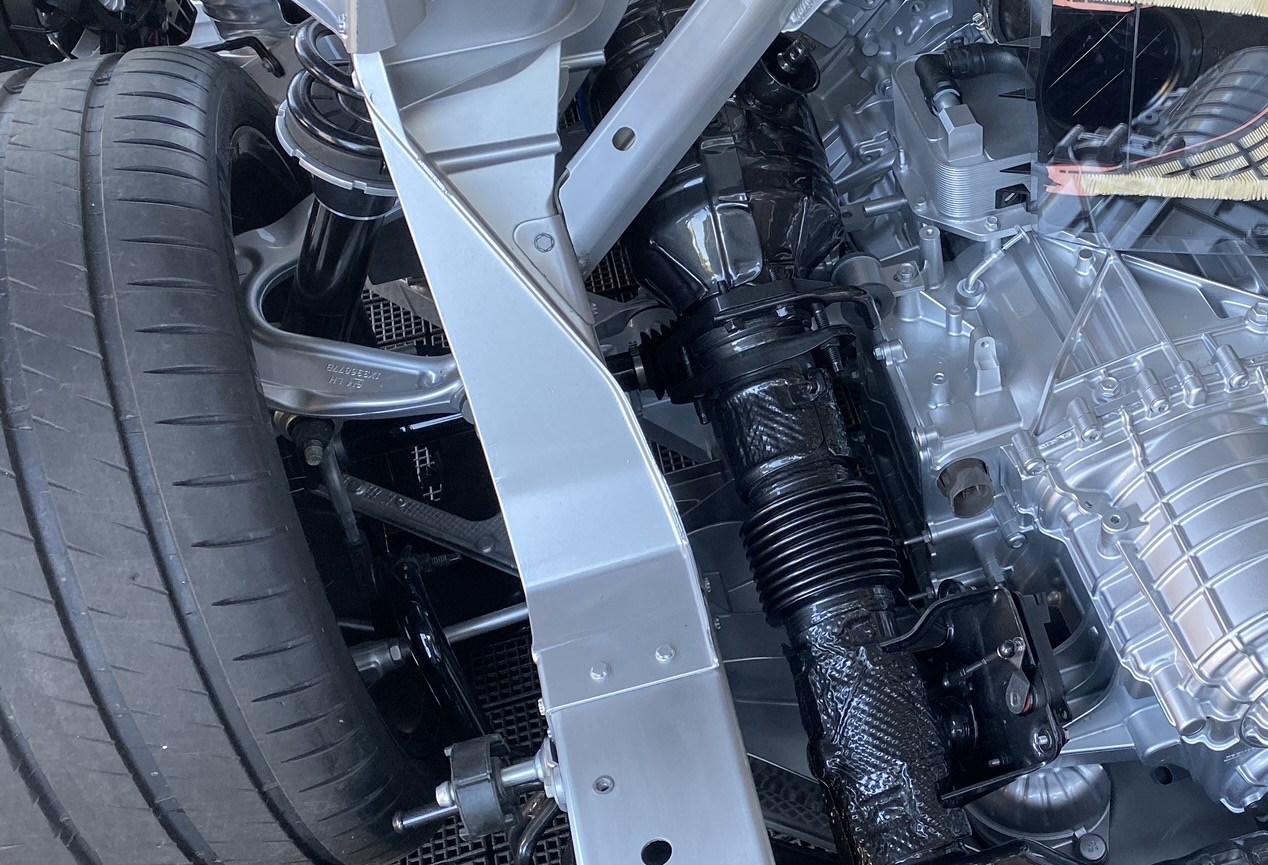
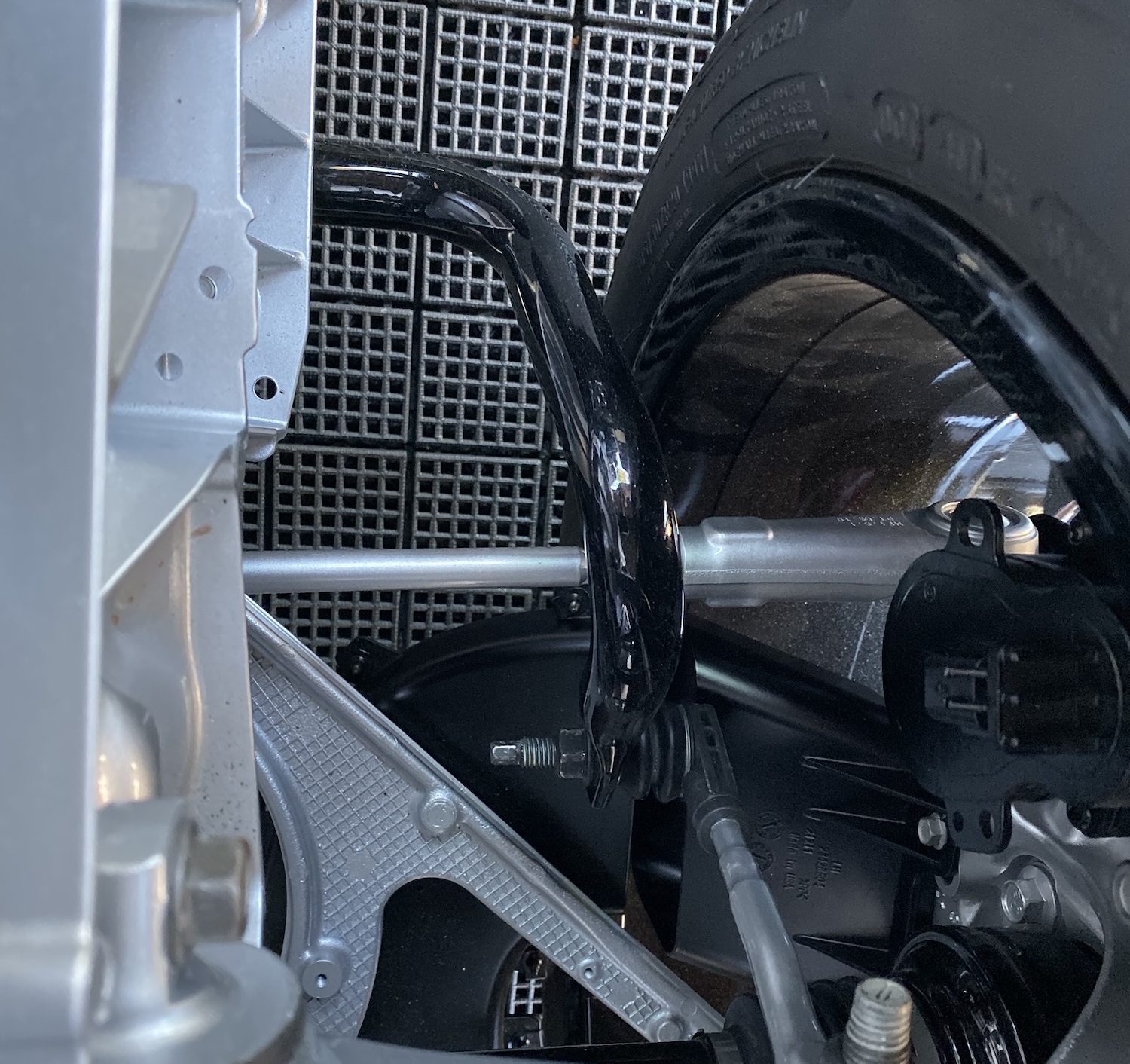
Making such adjustments would require a set of alignment tools, but it would not require any aftermarket links, sleeves, or camber plates. There appears to be a wide enough range of adjustments built into the car to significantly alter and dial in how it reacts on track.
From an OEM standpoint, this flexibility is revolutionary. It shows that Chevy wants the C8 Corvette to be taken to the track and put to work appropriately. If I had to pick nits, Chevy could have installed studs instead of bolts for those upper control arm dog bones, preventing having to touch the threads inside the chassis each time that a camber adjustment is made. Just a thought.
We will need to investigate further to see what the factory alignment specifications look like, but based on the initial feedback they are likely pretty tame and diverge from our above recommendations. There will be so many new owners to the mid-engine layout this decision makes sense from both a safety and tire life perspective. We look forward to getting our hands the latest Corvette, so we can geek out even more.
